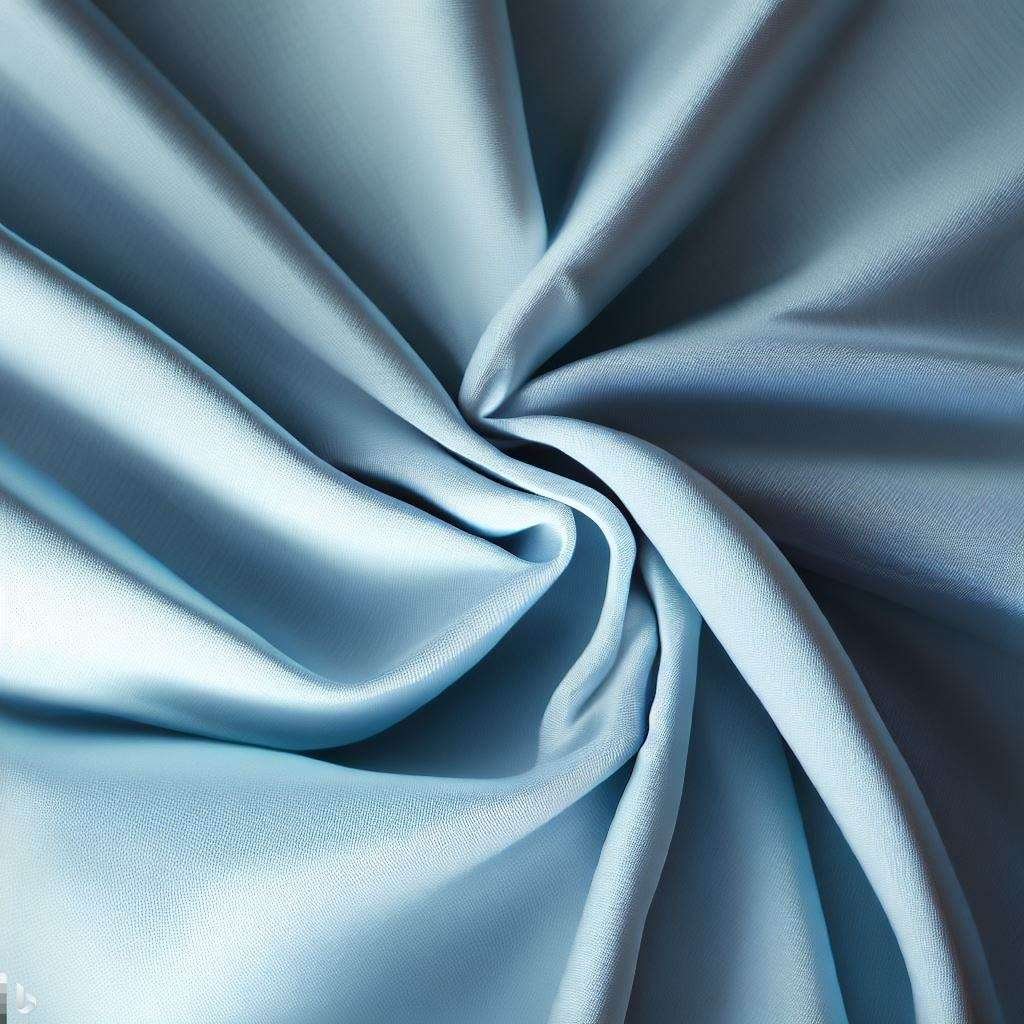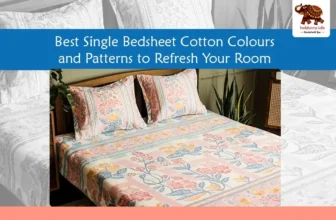Introduction
Cotton is one of the most popular fabrics in the world thanks to its natural softness, breathability, durability and versatility. Cotton can be woven differently to create different fabrics with different characteristics and uses. This blog post will explore the different types of cotton weaves and how they affect your comfort.
Cotton is a natural fibre from the cotton plant’s seed pod. Cotton fibres are spun into yarns and then woven into fabrics using different techniques. How the yarns are interlaced determines the type of weave and the fabric’s appearance, texture, weight, strength and drape.
There are three basic types of weaves: plain, twill and satin. Plain weave is the simplest and most common type, where the yarns cross over and under each other at right angles. Twill weave is where the threads cross over two or more yarns in a diagonal pattern, creating a distinctive diagonal rib on the fabric surface. Satin weave is where the yarns cross over four or more threads in a smooth and lustrous pattern, creating a shiny, slippery fabric surface.
Apart from these basic types of weaves, many variations and combinations of weaves create different types of cotton fabrics with other names and properties. Some examples are basket weave, dobby weave, jacquard weave, flannel weave, percale weave, oxford weave and sateen weave.
In this blog post, we will discuss each type of cotton weave in detail and how they affect your comfort.
Types of Cotton Weaves and How They Affect Comfort
1. Plain Weave
Plain weave is the simplest and most common type, where the yarns cross over and under each other at right angles. Plain weave produces a crisp, smooth, lightweight and durable fabric. Plain weave fabrics are suitable for many purposes, such as clothing, bedding, curtains, towels, etc.
Some examples of plain weave cotton fabrics are:
- Muslin: A thin, loosely woven fabric often used for lining, quilting, embroidery, and dressmaking.
- Organdy: A sheer and stiff fabric that is often used for bridal wear, evening wear and curtains.
- Canvas: A thick and sturdy fabric often used for bags, tents, sails and upholstery.
- Linen: A fabric made from flax fibres known for its breathability, absorbency and natural wrinkles.
- Rayon: A fabric made from regenerated cellulose fibres known for its softness, durability and versatility.
- Silk: A fabric made from silkworm cocoons known for its lustre, smoothness and luxury.
- Chiffon: A sheer and lightweight fabric that is often used for scarves, blouses and dresses.
- Organza: A sheer and crisp fabric often used for bridal wear, evening wear and curtains.
- Voile: A semi-sheer and lightweight fabric often used for blouses, dresses and curtains.
- Wool: A fabric made from sheep’s wool known for its warmth, insulation and elasticity.
- Crepe: A fabric with a crinkled or pebbled texture that is often used for dresses, skirts and suits.
Plain weave cotton fabrics are comfortable because they are breathable, smooth and durable. However, they may also wrinkle easily, shrink after washing or fade after exposure to sunlight.
2. Twill Weave

Twill weave is where the yarns cross over two or more yarns in a diagonal pattern, creating a distinctive diagonal rib on the fabric surface. Twill weave produces a soft, durable fabric resistant to wrinkles and stains. Twill weave fabrics suit trousers, jeans, jackets, shirts and more.
Some examples of twill weave cotton fabrics are:
- Denim: A heavy and sturdy fabric often used for jeans, jackets and other casual wear.
- Chino: A medium-weight and smooth fabric often used for trousers, shorts and uniforms.
- Gabardine: A tightly woven and water-repellent fabric that is often used for suits, coats and rainwear.
- Drill: A thick and strong fabric that is often used for workwear, uniforms and sportswear.
Twill weave cotton fabrics are comfortable to wear because they are soft, durable and resistant to wrinkles and stains. However, they may also be heavier, warmer and less breathable than plain weave fabrics.
3. Basket Weave
Basketweave is a type of weave where two or more yarns cross over and under each other in a checkerboard pattern, creating a fabric that resembles a woven basket. Basketweave produces a material that is thick, sturdy, textured and breathable. Basketweave fabrics are suitable for upholstery, bags, suits, shirts and more.
Some examples of basket weave cotton fabrics are:
- Canvas: A heavy and durable fabric that is often used for tents, sails, bags and shoes.
- Duck: A similar fabric to canvas but lighter and softer, often used for jackets, pants and bags.
- Oxford: A soft and smooth fabric that is often used for shirts, especially button-downs.
Basketweave cotton fabrics are comfortable because they are thick, sturdy, textured and breathable. However, they may also be bulky, stiff and prone to shrinking after washing.
4. Satin Weave

Satin weave is where the yarns cross over four or more threads in a smooth and lustrous pattern, creating a shiny, slippery fabric surface. Satin weave produces a glossy, soft, lightweight and durable fabric. Satin weave fabrics are suitable for lingerie, nightwear, dresses, blouses and more.
Some examples of satin weave cotton fabrics are:
- Sateen: A fabric made from long-staple cotton fibres known for its softness, sheen and durability.
- Charmeuse: A fabric made from fine cotton fibres known for its smoothness, durability and luxury.
- Damask: A fabric made from two different types of yarns that create a reversible pattern with contrasting textures.
Satin weave cotton fabrics are comfortable to wear because they are glossy, smooth, lightweight and durable. However, they may also be prone to snagging, pilling, fading, and losing shape after washing.
5. Dobby Weave
Dobby weave is a type of weave where a special device called a dobby is attached to the loom to create small geometric patterns on the fabric surface. Dobby weaves a fabric that is textured, decorative and elegant. Dobby weave fabrics are suitable for shirts, dresses, blouses and more.
Some examples of dobby weave cotton fabrics are:
- Dobby: A generic term for any fabric with a dobby weave, often used for shirting and dress materials.
- Pique: A fabric with a raised pattern that resembles waffles or honeycombs, often used for polo shirts and formal wear.
- Jacquard: A fabric with a complex and intricate pattern that is woven into the fabric rather than printed or embroidered, often used for upholstery, curtains and bedding.
Dobby woven cotton fabrics are comfortable to wear because they are textured, decorative and elegant. However, they may also be more expensive, delicate and difficult to iron than plain weave fabrics.
6. Flannel Weave

Flannel weave is a type of weave where the fabric is brushed or napped on one or both sides, creating a fuzzy and soft surface. Flannel weave produces a material that is warm, cosy and comfortable. Flannel weave fabrics suit sheets, blankets, pyjamas, and shirts.
Some examples of flannel weave cotton fabrics are:
- Flannel: A medium-weight fabric that is brushed on both sides, often used for bedding and clothing.
- Flannelette: A lighter-weight fabric brushed on one side, often used for baby clothes and bedding.
- Fleece: A thick and fluffy fabric brushed on both sides, often used for jackets, sweaters and blankets.
Flannel woven cotton fabrics are comfortable to wear because they are warm, cosy and comfortable. However, they may also be prone to pilling, shrinking and fading after washing.
7. Percale Weave
Percale weave is a type where the yarns cross over and under each other in a one-over-one pattern, creating a crisp, smooth and cool fabric. Percale weave produces a material that is lightweight, breathable and durable. Percale weave fabrics are suitable for sheets, pillowcases, duvet covers and more.
Some examples of percale weave cotton fabrics are:
- Percale: A generic term for any fabric with a percale weave, often used for bedding and shirting.
- Lawn: A delicate and sheer fabric often used for blouses, dresses and curtains.
- Batiste: A similar fabric to lawn but lighter and softer, often used for lingerie and nightwear.
Percale woven cotton fabrics are comfortable because they are crisp, smooth and cool. However, they may also be more prone to wrinkling than other types of weaves.
8. Oxford Weave
Oxford is a type of weave where two or more yarns cross over and under each other in a basket-like pattern, creating a thick, sturdy, textured fabric. Oxford weave is a fabric that is casual, durable and comfortable. Oxford woven fabrics suit shirts, especially button-downs, skirts, pyjamas and more.
Some examples of Oxford weave cotton fabrics are:
- Oxford: A classic fabric often used for casual shirts, featuring a two-tone appearance due to the combination of coloured and white yarns.
- Pinpoint Oxford: A finer and smoother version of oxford fabric often used for dressier shirts, featuring a tighter weave and a subtle dot-like pattern.
- Royal Oxford: A refined and elegant version of oxford fabric that is often used for formal shirts, featuring a lustrous and durable weave with a diamond-like pattern.
Oxford woven cotton fabrics are comfortable because they are casual, durable and comfortable. However, they may also be heavier, warmer and less breathable than other weaves.
9. Sateen Weave
Sateen weave is a type where the yarns cross over four or more threads in a smooth and lustrous pattern, creating a glossy, smooth, lightweight and durable fabric. Sateen weave produces a material similar to satin but made from cotton or bamboo fibres. Sateen weave fabrics are suitable for sheets, pillowcases, duvet covers and more.
Some examples of sateen weave cotton fabrics are:
- Sateen: A fabric made from long-staple cotton fibres known for its softness, sheen and durability.
- Bamboo Sateen: A fabric made from bamboo fibres known for its eco-friendliness, breathability and antimicrobial properties.
- Damask: A fabric made from two types of yarns that create a reversible pattern with contrasting textures.
Sateen woven cotton fabrics are comfortable because they are glossy, smooth, lightweight and durable. However, they may also be prone to snagging, pilling, fading, and losing shape after washing.
Pros and Cons of Cotton Weaves
Types of cotton weaves have many advantages and disadvantages that may affect your comfort and satisfaction. Here are some of the most common pros and cons of cotton weaves:
Pros of Cotton Weaves
- Cotton is a natural and renewable fibre that is biodegradable and eco-friendly.
- Cotton is breathable and absorbent, which helps regulate your body temperature and keep you cool and dry.
- Cotton is hypoallergenic and gentle on the skin, which makes it suitable for people with allergies or sensitive skin.
- Cotton is versatile and can be woven to create different fabrics with different characteristics and uses.
- Cotton is durable and can withstand repeated washing and wearing without losing its quality.
Cons of Cotton Weaves
- Cotton can wrinkle easily and may require ironing or steaming to maintain a smooth appearance.
- Cotton can shrink after washing and drying, especially if exposed to high temperatures or harsh detergents.
- Cotton can fade after exposure to sunlight or bleach, which may affect the colour and vibrancy of your sheets or clothing.
- Cotton can be prone to pilling when small balls of fibre form on the fabric’s surface due to friction or wear.
- Cotton can be more expensive than synthetic fabrics, depending on the type and quality of the cotton.
How to Choose the Best Cotton Weave for Your Needs?
Cotton weaves are not one-size-fits-all. Depending on your needs, preferences and budget, you may choose different types of cotton weaves for various purposes. Here are some tips on how to select the best cotton weave for your needs:
Purpose of the fabric
What are you going to use the cloth for? Is it for bedding, clothing, upholstery or something else? Different types of cotton weaves have different characteristics and uses, so you may choose the one that suits your purpose best. For example, if you are looking for bedding, select percale for a crisp and cool feel, sateen for a smooth and lustrous feel, or flannel for a warm and cosy feel. If you are looking for clothing
Quality of the fabric
What type and quality of cotton are you looking for? Cotton can be classified by its staple length, which refers to the size of the individual fibres. Longer staples produce smoother, more robust and more durable fabrics than shorter staples. Consider looking for long-staple or extra-long staple cotton, such as Pima or Egyptian cotton, for a high-quality material that will last longer and feel softer. Look for certified organic cotton if you care about the environment and health.
Weave of the fabric
What type of weave do you prefer? Cotton can be woven differently to create different materials with different textures, appearances and feels. Some common types of cotton weaves are plain weave, twill weave, satin weave, basket weave, dobby weave, flannel weave, percale weave, sateen weave and oxford weave. Each type of weave has pros and cons, so choose the one that matches your preferences and needs. For example, select satin or sateen weave if you like a glossy, smooth and drapable fabric. Choose basket or Oxford knit if you want a thick, sturdy, textured material.
Thread count of the fabric
What thread count do you want? The thread count is the number of threads per square inch of fabric. While a higher thread count may indicate a finer and smoother material, it is not the only factor affecting cotton fabrics’ quality and comfort. Other factors, such as the type and quality of the cotton, the weave, the finish and the care instructions, are also essential to consider. Generally, a thread count between 200 and 800 is suitable for cotton fabrics.
Colour and design of the fabric

What colour and design do you like? Cotton fabrics come in various colours and designs that match your taste and style. You may opt for neutral or solid colours for a simple or elegant look. You may also opt for bright colours or prints for a fun or lively look. Mix and match different colours or designs to create contrast or harmony in your fabrics.
You can find the best cotton weave for your needs by following these tips. Cotton weaves are not one-size-fits-all, but they are all made from the same natural and renewable fibre that is biodegradable and eco-friendly. Cotton weaves are an excellent choice for anyone who values comfort, quality and sustainability.
FAQ
What is the difference between cotton and Egyptian cotton?
Egyptian cotton is a type of long-staple cotton grown in Egypt and is known for being high-quality, soft and durable. However, not all Egyptian cotton is authentic or certified, so some products may use the term loosely or deceptively. Other types of long-staple cotton, such as Pima or Supima, can offer similar benefits at a lower cost.
What is the difference between percale and sateen?
Percale and sateen are two types of weaves that are commonly used for cotton sheets. Percale is a crisp and cool weave that uses a one-over-one-under pattern, while sateen is a smooth and lustrous weave that uses a one-under-four-over pattern. Percale sheets are more breathable and wrinkle-resistant, while sateen sheets are silkier and drapable.
What is the best thread count for cotton sheets?
Thread count refers to the number of threads per square inch of fabric. While a higher thread count may indicate a finer and smoother fabric, it is not the only factor affecting cotton sheets’ quality and comfort. Other factors, such as the type and quality of the cotton, the weave, the finish and the care instructions, are also essential to consider. Generally, a thread count between 200 and 800 is suitable for cotton sheets.
How do I wash and care for my cotton sheets?
Cotton sheets are easy to wash and care for but may require some special attention to maintain their appearance and longevity. Here are some tips for washing and caring for your cotton sheets:
- Wash your sheets before using them for the first time to remove any dirt or chemicals from the manufacturing process.
- Wash your sheets separately from other items to prevent lint or colour transfer.
- Use mild detergent and cold or warm water to prevent shrinking or fading.
- Avoid using bleach or fabric softener, which may damage the fibres or reduce their absorbency.
- Tumble dry your sheets on low heat or line dry them to prevent wrinkling or overheating.
- Iron your sheets if needed to remove any wrinkles or creases.
- Store your sheets in a cool, dry place away from direct sunlight.
How often should I change my cotton sheets?
Cotton sheets should be changed at least once a week to keep them fresh and hygienic. However, you may need to change them more often if you sweat, have allergies or skin conditions, share your bed with pets or children, or live in a humid climate. Changing your sheets regularly can help prevent dust mites, bacteria, odours and stains from accumulating on your bedding.
What are the benefits of organic cotton?
Organic cotton is grown without synthetic pesticides, fertilizers, genetically modified seeds or other harmful chemicals. Organic cotton has many benefits for the environment, the farmers and the consumers. Some of these benefits of cotton bedsheets are:
- Organic cotton reduces water pollution and soil erosion using natural pest control methods and crop rotation.
- Organic cotton conserves water and energy by relying on rainwater and solar power instead of irrigation systems and fossil fuels.
- Organic cotton supports fair trade and social justice by providing farmers and workers better working conditions and wages.
- Organic cotton protects human health by avoiding exposure to toxic substances that may cause allergies, irritations or diseases.
- Organic cotton enhances comfort by producing softer, smoother, more breathable fabrics.
What are some common types of cotton weaves used for clothing?
Cotton fabrics can be woven or knitted in different ways to create different types of clothing with different characteristics and uses. Some common types of cotton fabrics used for clothing are:
- Muslin: A thin, loosely woven fabric often used for lining, quilting, embroidery, and dressmaking.
- Organdy: A sheer and stiff fabric often used for bridal wear, evening wear and curtains.
- Canvas: A thick and sturdy fabric often used for bags, tents, sails and upholstery.
- Linen: A fabric made from flax fibres known for its breathability, absorbency and natural wrinkles.
- Rayon: A fabric made from regenerated cellulose fibres known for its softness, durability and versatility.
- Silk: A fabric made from silkworm cocoons known for its lustre, smoothness and luxury.
- Chiffon: A sheer and lightweight fabric often used for scarves, blouses and dresses.
- Organza: A sheer and crisp fabric often used for bridal wear, evening wear and curtains.
- Voile: A semi-sheer and lightweight fabric often used for blouses, dresses and curtains.
- Wool: A fabric made from sheep’s wool known for its warmth, insulation and elasticity.
- Crepe: A fabric with a crinkled or pebbled texture that is often used for dresses, skirts and suits.
- Denim: A heavy and sturdy fabric often used for jeans, jackets and other casual wear.
- Chino: A medium-weight and smooth fabric often used for trousers, shorts and uniforms.
- Gabardine: A tightly woven and water-repellent fabric often used for suits, coats and rainwear.
- Drill: A thick and strong fabric often used for workwear, uniforms and sportswear.
- Pique: A fabric with a raised pattern that resembles waffles or honeycombs, often used for polo shirts and formal wear.
- Jacquard: A fabric with a complex and intricate pattern that is woven into the fabric rather than printed or embroidered, often used for upholstery, curtains and bedding.
- Flannel: A medium-weight fabric brushed on both sides, often used for bedding and clothing.
- Flannelette: A lighter-weight fabric brushed on one side, often used for baby clothes and bedding.
- Fleece: A thick and fluffy fabric brushed on both sides, often used for jackets, sweaters and blankets.
- Percale: A crisp and cool weave with a one-over-one-under pattern, often used for sheets, pillowcases and duvet covers.
- Sateen: A smooth and lustrous weave with a one-under-four-over pattern, often used for sheets, pillowcases and duvet covers.
- Oxford: A soft and smooth weave with a basket-like pattern, often used for shirts, especially button-downs.
How do I choose the best cotton sheets for my bed?
Choosing the best cotton sheets for your bed depends on your preferences, budget and sleeping habits. Here are some factors to consider when choosing your cotton sheets:
- Size: Make sure your sheets fit your mattress size and depth. You may need extra-deep pockets if you have a thick mattress or a mattress topper. You may also want to measure your pillows to find the right pillowcase size.
- Quality: Look for high-quality cotton sheets that are made from long-staple or extra-long staple cotton fibres. These fibres produce smoother, more robust, durable fabrics than short-staple cotton fibres. Look for certified organic cotton sheets if you care about the environment and your health.
- Weave: Choose the weave that suits your comfort and style preferences. Percale sheets are crisp and cool, while sateen sheets are smooth and lustrous. Flannel sheets are warm and cosy, while bamboo sateen sheets are eco-friendly and breathable. Look for dobby or jacquard sheets if you like textured or patterned fabrics.
- Thread count: Consider the thread count of your cotton sheets, but don’t rely on it as the only indicator of quality. The thread count is the number of threads per square inch of fabric. While a higher thread count may indicate a finer and smoother material, it is not the only factor affecting cotton sheets’ quality and comfort. Other factors, such as the type and quality of the cotton, the weave, the finish and the care instructions, are also essential to consider. Generally, a thread count between 200 and 800 is suitable for cotton sheets.
- Color and design: Choose the colour and design of your cotton sheets that match your bedroom decor and personal taste. You may opt for neutral or solid colours if you want a simple or elegant look. You may also opt for bright colours or prints for a fun or lively look. Mix and match different colours or designs to create contrast or harmony in your bedding.
What are some tips to make my cotton sheets last longer?
Cotton sheets are durable and can last for years if you take good care of them. Here are some tips to make your cotton sheets last longer:
- Wash your sheets before using them for the first time to remove any dirt or chemicals from the manufacturing process.
- Wash your sheets separately from other items to prevent lint or colour transfer.
Conclusion
Cotton is a versatile and comfortable fabric woven in different ways to create other materials with different characteristics and uses. In this blog post, we have explored some of the most common types of cotton weaves, such as plain weave, twill weave, satin weave, basket weave, dobby weave, flannel weave, percale weave, sateen weave and oxford weave. We have also discussed some of the pros and cons of cotton weaves and some of the most frequently asked questions about them.
This blog post has helped you understand the different types of cotton weaves and how they affect your comfort. Whether you are looking for bedding, clothing, upholstery or something else, you can find the best cotton weave for your needs by considering your purpose, preferences and budget.
Types of cotton weaves are not one-size-fits-all, but they are all made from the same natural and renewable fibre that is biodegradable and eco-friendly. Cotton weaves are an excellent choice for anyone who values comfort, quality and sustainability.















